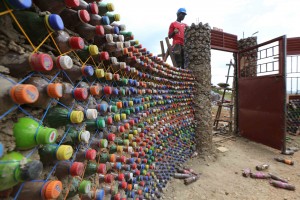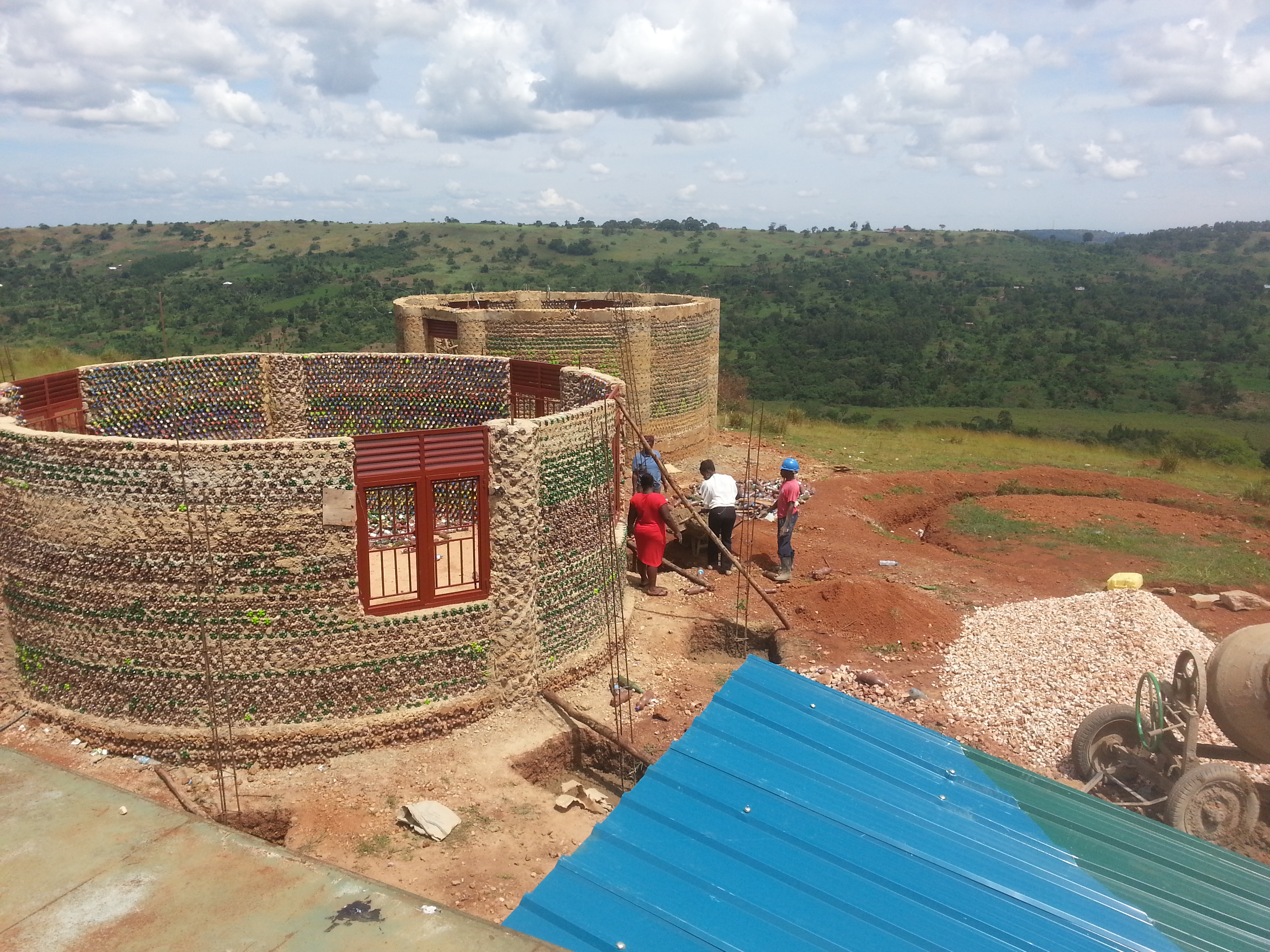The first step to construct with bottles is to fill the PET bottles with local available, slightly wet earth or sand.  The bottle will be filled in steps of 2-3 cm layers. Each layer has to be pounded with a stick. The stick should be made from a hard tree and should be a bit thinner than the diameter of the bottleneck.
The bottle will be filled in steps of 2-3 cm layers. Each layer has to be pounded with a stick. The stick should be made from a hard tree and should be a bit thinner than the diameter of the bottleneck.
It should be long enough that you can place your hand comfortable at one end, when the other end touches the bottom of the bottle. It is advisable to peel of the bark of the stick and and leave it over night in a water bath to make the wood smooth.
You can use your hand as a funnel to pile the earth in the bottle. Each 2-3 cm layer has to be pounded with the stick to guarantee that the bottle is constantly compacted.It is also possible to cut one of the bottle and use the upper top us a funnel. Place the top of your new funnel inverted on top of the bottle you want to fill. Place the pounding stick in the bottle and fill the sites of the funnel with earth. As you start moving the pounding stick earth will start falling consistently into the bottle and will be compacted by the stick. You don’t need to remove the funnel until the bottle is full. Place the lid on the bottle when its compacted. Make sure you almost can’t squeeze the bottle when its filled. To compacted the earth more you can use a hammer or wooden club to hit the pounding stick harder. If you are skilled you can fill a bottle between 3 to 5 minutes.
 Now this bottle bricks will be placed like bricks in a adobe or mortar bed. The lid should face the inside wall. The bottle tops should be connected with nylon (building) rope. This is necessary that the bottles are hold in place and are not slipping away during the construction. Almost every bottle with any shape can be used for this construction. Important is, that every course consists of the same bottles and bigger bottles are used for the bottom and the foundation.
Now this bottle bricks will be placed like bricks in a adobe or mortar bed. The lid should face the inside wall. The bottle tops should be connected with nylon (building) rope. This is necessary that the bottles are hold in place and are not slipping away during the construction. Almost every bottle with any shape can be used for this construction. Important is, that every course consists of the same bottles and bigger bottles are used for the bottom and the foundation.
Windows and Doors needs a lintel and the roof should be placed on a ring beam.
 Columns can be created through laying the bottles in circles, lids connected with building rope. The center is filled by an reinforcement cage and concrete. A connection to the wall can be made through interdigitation or steel inlays. The wall can be finished with plaster. It is possible to apply the mortar in a way that the lids of the bottle are still visible. Keep in mind that especially children like to experiment and lids are at risk to be pricked.
Columns can be created through laying the bottles in circles, lids connected with building rope. The center is filled by an reinforcement cage and concrete. A connection to the wall can be made through interdigitation or steel inlays. The wall can be finished with plaster. It is possible to apply the mortar in a way that the lids of the bottle are still visible. Keep in mind that especially children like to experiment and lids are at risk to be pricked.
First studies have shown that a probably made bottle brick can withstand a compressive strength of approximate 2,5-3 N/mm². The elastic modulus of a wall element can be approximately 50 N/mm².
